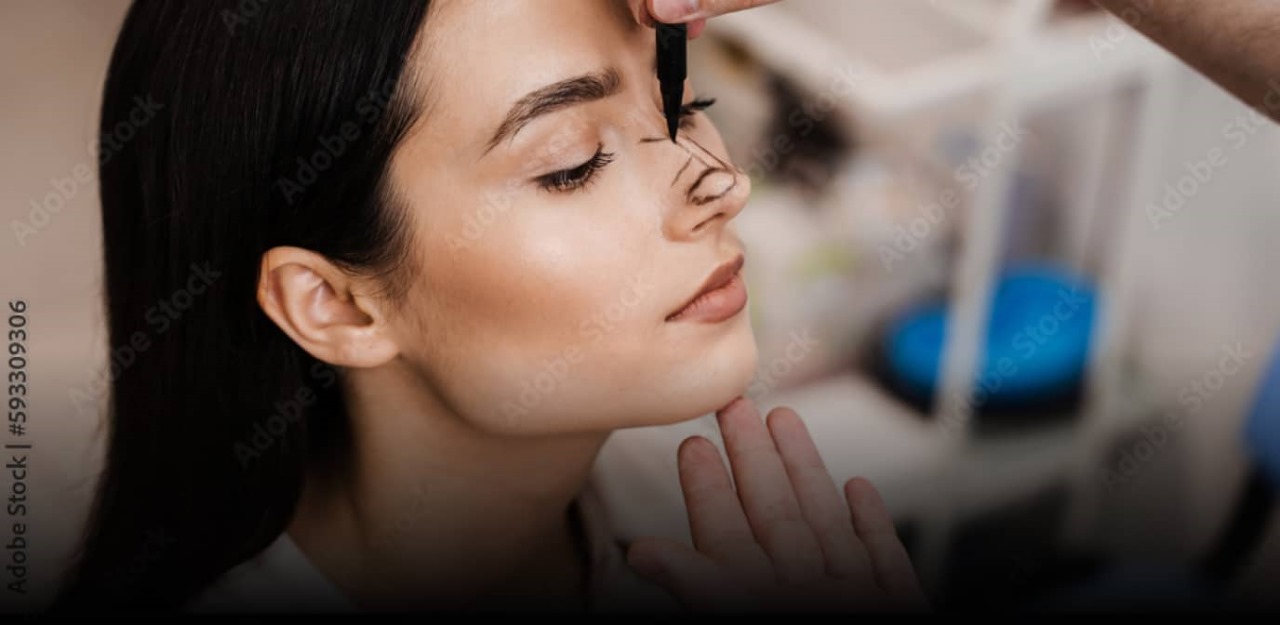Share your medical reports and get an exclusive offer tailored to your needs, requirements and preferences
Avg Price: $ 2206-$ 8840


Treatment Time
Recovery Time
Hospitalization Days
Success Rate
Rhinoplasty or nose job stands as one of the most widely sought-after surgical procedures globally. In the year 2018, over 200,000 rhinoplasties were carried out in the United States, making it the third most frequently performed Plastic Surgery in the nation.
While the paradigm has evolved, rhinoplasty continues to be one of the most intricate surgical procedures within the field of Plastic Surgery today. Because the nose plays a pivotal role in facial aesthetics, ensuring correct nasal proportions and symmetry is of utmost importance. The technical complexities, the plethora of various techniques available, and the quest for reliable outcomes can pose significant challenges, even for highly skilled surgeons.
This underscores the importance of accessibility of cutting-edge diagnostic tools and expertise in this cosmetic intervention. India is renowned for its advanced medical centers that incorporate cutting-edge technology, guaranteeing top-tier Cosmetic and Plastic Surgery services for patients. The country possesses a robust healthcare infrastructure and is home to highly proficient plastic surgeons who stay updated with the latest developments in Cosmetic procedures, notably Rhinoplasty. What adds to India's attractiveness is its cost-effectiveness compared to Western nations. As a result, individuals have the opportunity to avail themselves of the best doctor for Rhinoplasty and best hospital for Rhinoplasty in India.
Rhinoplasty refers to a Plastic Surgery procedure that alters both the shape and size of one's nose. Cosmetic Rhinoplasty is chosen by individuals to enhance the aesthetic appearance of their nose and overall facial features, while functional rhinoplasty is opted for to enhance breathing and nasal function. Surgeons who conduct this surgery typically have specialized training in plastic surgery or facial plastic surgery. Informally, this surgery is commonly known as a nose job.
Rhinoplasty, or Nose Surgery, may be needed for several reasons:
Take Charge of Your Health
Book a Free Consultation

Following are two primary categories of Rhinoplasty procedures based on mode of operation:
Following are the types of Rhinoplasty based on the purpose to be addressed:
Before scheduling a Rhinoplasty procedure, you will have a consultation with a surgeon. During this consultation, various factors that determine the suitability of the surgery for you are discussed. This consultation typically includes:
Medical History Assessment: You will be asked about your medical history, with a focus on your reasons for wanting the surgery and your desired outcomes. Your medical history, including any prior nasal issues, surgeries, and medications you take, will also be reviewed. It's important to note that if you have a bleeding disorder like hemophilia, you may not be a suitable candidate for rhinoplasty.
Physical Examination: Your healthcare provider conducts a physical examination, carefully evaluating your facial features, as well as the internal and external aspects of your nose. This examination helps identify the necessary changes and assesses factors like the thickness of your skin and the strength of the cartilage at the tip of your nose. It is also crucial for understanding how rhinoplasty may impact your breathing.
Photographs: Comprehensive photographs of your nose are taken from various angles. Some surgeons may use computer software to manipulate these photos, showing you potential outcomes. These photographs serve as a visual reference for before-and-after comparisons and facilitate a detailed discussion about your surgical goals.
Expectation Discussion: You and the surgeon engage in a discussion about your motivations for the surgery and your anticipated results. The surgeon will explain what rhinoplasty can and cannot achieve, as well as the possible outcomes. While it's natural to feel self-conscious discussing your appearance, it's crucial to have an open and honest conversation with the surgeon to ensure your desires and goals for the surgery are clearly understood.
Your Health is Our Priority
Book a Free Consultation
Every Rhinoplasty procedure is tailored to the individual's unique anatomy and objectives. You will receive anesthesia, a medication that induces a sleep-like state during surgery. The choice of anesthesia depends on the complexity of the procedure and the surgeons preference. It is advisable to consult your surgeon to determine the most suitable type for you. Following are the steps involved in the surgery:
1.Administration of anesthesia. This procedure can be done in two ways:
2.The Surgeon may perform the procedure inside the nose or through a small external incision at the base of the nose, between the nostrils. The surgeon will likely manipulate the bone and cartilage beneath the skin.
3. The alteration of the nose's bone and cartilage can be achieved in various ways, depending on the extent of changes required, the nasal structure, and available materials.
4.After the surgery, you will be taken to a recovery room where you will be closely monitored as you wake up. Depending on your health status, you may be discharged later the same day or, if you have underlying health concerns, you may need to stay overnight for observation.
Like any significant surgical procedure, Rhinoplasty comes with potential risks, including:
In addition to these general risks, specific complications associated with Rhinoplasty can include, but are not limited to:

Here are some potential postoperative experiences following Rhinoplasty:
Avail the Expert Health Advice
Book a Free Consultation
Rhinoplasty can have lasting cosmetic and functional effects, providing individuals with improved nasal aesthetics and, in some cases, better breathing. However, its essential to take steps to maintain your results and consider factors like natural aging and lifestyle choices in your long-term nose care. Regular communication with your surgeon and adherence to their recommendations are key to maximizing the benefits of rhinoplasty over time. Here are some common long-term effects and considerations:
According to medical literature, the rate of revision for Rhinoplasty or cosmetic nose surgery is estimated to range from 10 to 15 percent. As a result, Rhinoplasty can be considered successful in approximately 85 to 90 percent of cases. However, the success rate may be even higher when the procedure is performed by board-certified plastic surgeons with expertise in this specific area.
The cost of Heart Valve Replacement Surgery in India is generally more affordable than Western nations, while still maintaining world-class quality. The typical price range for such procedures in India spans from INR 2.97 lakh ($3600) to INR. 10,00,000( $ 12,578)
| Location | Minimum Cost ($) | Average Cost ($) | Maximum Cost ($) |
| Delhi | $ 5500 | $ 10000 | $ 15000 |
| Mumbai | $ 5500 | $ 10000 | $ 15000 |
| Chennai | $ 3800 | $ 5000 | $ 12000 |
| Hyderabad | $ 4200 | $ 8000 | $ 12500 |
The comparative cost of Heart Valve Replacement Surgery in India with respect to other countries:
| Location | Minimum Cost ($) |
| US | $80,000 |
| UAE | $25,000 |
| Mexico | $12,500 |
| Turkey | $10,000 |
Following are the factors affecting cost of Rhinoplasty in India:
The expenses for diagnostic tests and evaluations linked to rhinoplasty can fluctuate due to several factors. These factors encompass the particular tests needed, your choice of healthcare facility or clinic, and your geographical location. These diagnostic evaluations may encompass pre-operative assessments, imaging examinations like CT scans or X-rays, blood tests, and other evaluations aimed at confirming your suitability for the surgery and facilitating effective procedure planning. The approximate cost of diagnostics for rhinoplasty is INR 2000-4000.
MedFlick, your trusted healthcare companion, is dedicated to ensuring that your medical journey goes as smoothly and successfully as possible.
Fostering expertise backed by commitment, resilience and years of experience, we connect you to a wide network of India's best doctors
Explore the most advanced, reputable and trusted hospitals in India, offering the highest levels of clinical and surgical excellence

The worlds most trusted personalized health community with more than 1,00, 000 members that share their journey, experiences and health insights. Join your community and get access to make informed health decisions.
Explore


